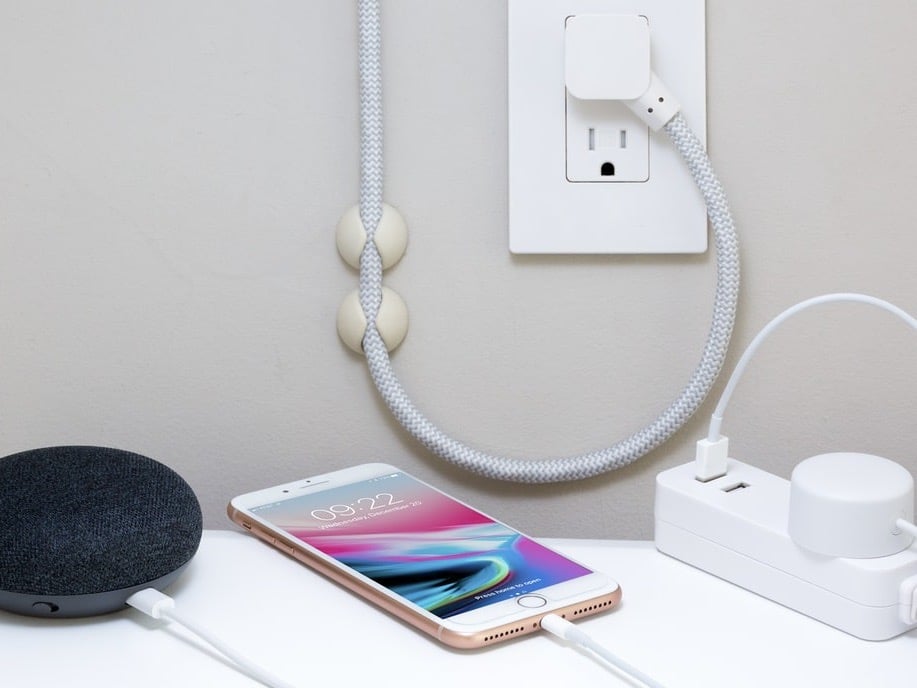By the end of the year, the U.S. will have approximately 63 million smart homes. That number expects to climb substantially in the next few years. By 2024, 53% of all homes in North America are likely to be smart homes. Not only do the connectivity and dynamic technology associated with smart gadgets enhance these homes with improved functionality, but they can also even add value to houses.
Gadgets for smart homes have many benefits. Smart devices such as smart thermostats, blinds, and lighting may be controlled remotely from a homeowner’s smartphone. In addition to the great convenience they have, they give owners immense flexibility in their use. In many cases, smart features can improve home security and energy efficiency. They can even help homeowners save money on their energy costs.
Of course, the downside of purchasing a smart home or outfitting one with smart features is the expense. Smart homes tend to be more expensive than their non-connective counterparts. This isn’t only because of their added functionality but also because there is greater demand among buyers for connected homes.
Additionally, all the added functionality associated with smart home features requires specialized maintenance and repair professionals when something goes wrong. Also, when purchasing a smart home, you’ll need to ensure that your home inspector has plenty of experience inspecting smart homes.
Here, we’ll outline what to expect when inspecting smart homes and how to turn any home into the smart home of your dreams.
How to Inspect a Smart Home
A home inspection is a crucial aspect of buying any home, but smart homes require some additional expertise on the part of the home inspector. More advanced than traditional homes, smart homes can feature a wide range of tech devices and gadgets that require inspection know-how. During the inspection, smart home inspectors will have to ensure that smart features function correctly and, possibly, even guide buyers about the use and maintenance of these devices.
The fact is, a smart home can differ from a traditional home in several ways. For instance, some smart homes may feature smart locks. It’s relatively easy for an inspector to determine if conventional locks are functioning correctly, but to ensure that a smart lock works, they’ll need to take additional steps to test these digital gadgets.
Suppose you’re hiring an inspector to inspect your house before listing it on the real estate market. In that case, you’ll need to explain the types of smart features you have to ensure that the individual you hire understands all the technical aspects of these devices. Fortunately, the boom in smart home upgrades and construction has led many inspectors to quickly obtain the skills they need to assess these connected houses.
What Are Some Issues to Expect with a Smart Home?
A smart thermostat can go out just as a conventional one would. Anything mechanical, electrical, or digital can break down. In addition to periodic repairs, smart features can involve problems like a failure to integrate with other smart features. This is often the case with sub-systems. For instance, security cameras may not play nicely with the overall smart security system. When integrating smart features into your home, it may be challenging to find experts who can guide you about what features to install with your current systems. Connectivity can also be a problem from time to time, but upgrading to a better router can often fix this issue.
How to Turn Your Home into a Smart Home

If you own or just purchased a home without smart features, you can begin to transform it into a smart house with simple gadgets that don’t require substantial investment. Even with a small budget, you can add many smart features to your home, allowing you to enjoy the many functions and connectivity that small upgrades afford. The key to successfully integrating new smart features into your home is research; you’ll need to carefully evaluate the components you choose to buy for their ease of use and ability to integrate with other smart features.
Before buying any smart gadget or device, be sure to get to know its pros and cons and read reviews from customers so that you can obtain some helpful information about the types of issues they may have encountered. You may also want to contact an inspector or contractor in your area who can guide you to purchase the best products for your needs and help you troubleshoot problems when something doesn’t work as expected.
What Types of Smart Gadgets Should I Purchase?

The types of smart devices you purchase for your home often come down to your own specific needs and preferences. Here, we’ll go room by room to explore the type of home automation you may wish to install:
Kitchen
A smart kitchen can add loads of additional attributes to your cooking space. It makes sense to invest in smart features if you’re planning a kitchen renovation. Some popular smart devices for kitchens include:
- Major kitchen appliances like a refrigerator, range, oven, microwave, and dishwasher
- Voice-activated kitchen faucet
- Coffee maker
- Connected kitchen scale
- Wifi-enabled instant pot
- Connected air fryer
Living Room
You can enhance your living room with smart features such as:
- Overhead lighting, lamps, bulbs
- Connected blinds or draperies
- Ceiling fan
- Smart electric fireplace
- Robot vacuum
Family Room / TV Room
There are many high-tech options for your TV room. Here are a few ideas to inspire your home entertainment space:
- Smart TV
- Smart speakers
- Home theater system
- Wireless music system
- Smart hub (to control the room or the home’s smart features)
- Smart remote
- Smart projector
Home Office
If you work from home routinely or even occasionally, you can benefit by smartening up your home office with features such as:
- Smart desks (digitally adjustable)
- WiFi-enabled scanner
- Multi-device keyboard
- Wi-Fi coffee mug (yes, it keeps the best beverage on earth warm for every sip)
- Wireless charging pads
Bedroom
A smart bedroom can enhance your comfort, allowing you to enjoy a sanctuary space. Consider adding smart home gadgets to your room or children’s rooms such as:
- Sleep tracker
- Baby monitor
- Smart TV
- Smart bed and accessories
- Connected lighting and draperies (that you can control with your smartphone)
Patio
You can also take your smart features outdoors. Whether you’re hoping to create an outdoor kitchen or living room, you can outfit your patio with many smart features that can enhance your enjoyment of the space. Some to keep in mind include:
- Waterproof Bluetooth speakers
- Smart outdoor lighting
- Wi-Fi range extender
- Smart grill
- Digital smoker
- Smart fire pit
- Pool monitor
Overall Home

Some smart features can benefit your entire home and are not specific to any individual room or single area. Of these, you may want to include:
- Smart security system with smart locks / keyless entry and digital cameras
- Smart outdoor / landscape lighting
- Smart irrigation system
- Smart lawnmower
- Alexa or Google Home (‘she’ can help you control your smart features along with additional personal assistant functionality)
- Smart thermostat
The Benefits of ‘Going’ Smart around the House
Today’s smart gadgets and home features can add terrific functionality to houses. Even if you don’t consider yourself to be tech-savvy, you can benefit from the ease of use that many of these features afford. You may wish to begin your home’s smart transformation with the ideal smart system or hub. There are many different products on the market. You’ll want to choose the right one for your home and budget. Be sure to learn about its integration capabilities and read reviews to find out about any problems other customers have encountered.
Once you find your hub, there are many different add-ons you can purchase. It can be helpful to begin by focusing on your needs. For instance, you might start a smart transformation by focusing on home security first. If you have a large property, you might prefer to look first to smart landscaping features and tools. One of the main benefits that smart devices can offer is their ability to lighten the load associated with household chores.
Smart homes often allow homeowners to save substantially on their energy costs. The ability to control the thermostat remotely, for instance, can save homeowners hundreds of dollars each year. Between smart thermostats, smart water systems, and even smart electrical strips, the cost savings associated can amount, on average, to anywhere between $450 and $2,000 per year.
And, of course, there’s the fantastic convenience that smart gadgets offer. With applications designed to be controlled right from your smartphone, you can water your plants, monitor dinner, and vacuum, all while reclining in your favorite chair.
Summary
Smart homes aren’t just a trend – they’re ushering in a new era of home life. What’s excellent about integrating smart features into your home is that you can customize this transformation with devices that suit your specific needs and budget. The fact is, smart features can add to your home’s value, safety, and comfort in numerous ways. And of course, reliable inspection services can help you maintain and integrate your smart features successfully.

